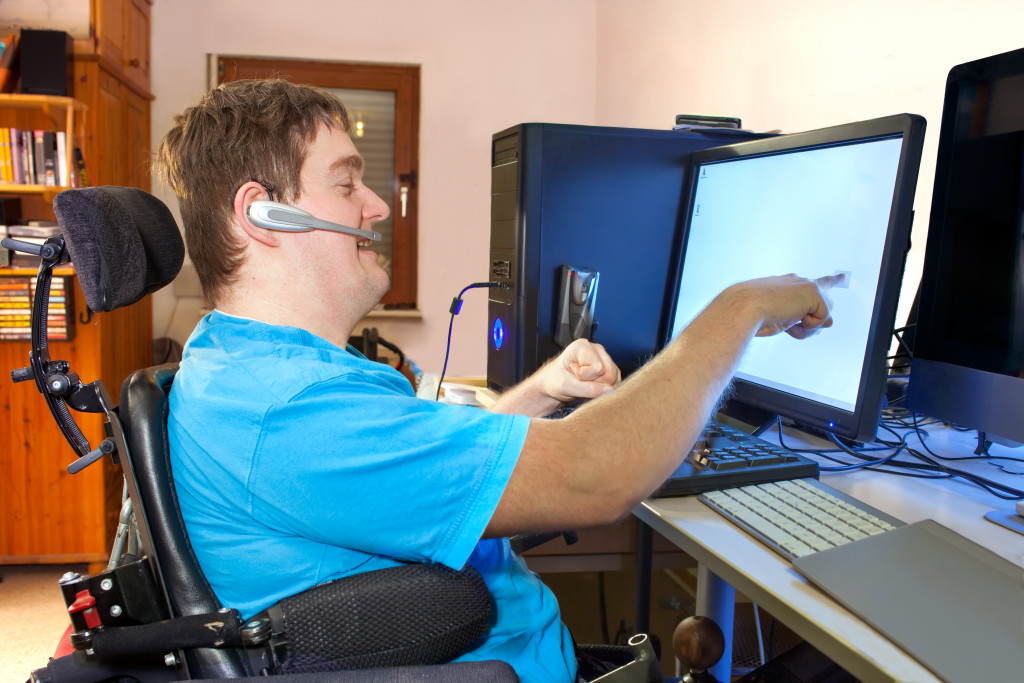Around the world, people with disabilities are fighting for their rights to be treated equally in the workplace. In some countries, laws have been passed to ensure that these individuals are given the same opportunities. In other places, the fight is still ongoing. No matter where you live, there are things you can do to make your workplace more welcoming for physically challenged employees.
Here are some tips on how to make workplaces welcoming for physically challenged employees:
Make Sure Your Workplace is Accessible
This may seem obvious, but it’s essential to make sure that your workplace is physically accessible for employees with disabilities. This includes things like ensuring there are wheelchair-accessible entrances and bathrooms, as well as having Braille signs and elevator buttons.
There are a few key ways to have an accessible workplace for disabled employees. First and foremost, it ensures that everyone is on an equal playing field. Employees with disabilities shouldn’t struggle to access the same resources as their colleagues. They shouldn’t have to worry about whether their workplace is accommodating their needs.
In addition, accessible workplaces message potential disabled employees that your company is inclusive and welcoming. This can help you attract top talent and retain the employees you already have.
If your workplace is not accessible, talk to your boss or Human Resource department about making some changes. Many employers are open to making adjustments if it means they can attract and retain talented employees.
Provide Reasonable Accommodations
Employers are required by law to provide reasonable accommodations for employees with disabilities. This means making changes to the workplace or how tasks are completed so that the employee can perform their job duties.
Some examples of reasonable accommodations include providing a modified work schedule, allowing the employee to work from home, or providing assistive devices like a computer screen magnifier. Similarly, if you have an employee who faces difficulty walking or standing, you can get a wheelchair. You can also have a good-quality lift chair to ease the transition to a wheelchair for the employee.
Again, talk to your boss or HR department about what accommodations may be possible.
Make an Effort to Inclusivity
Employees with disabilities can sometimes feel isolated in the workplace. One way to combat this is to make an effort to include them in workplace activities. This could involve things like inviting them to lunch or coffee breaks, including them in team-building activities, or just making an effort to talk to them regularly.
Inclusivity also means using language that is inclusive of people with disabilities. For example, instead of saying “disabled person,” say “person with a disability.” This may seem like a small change, but it can make a big difference in the way people with disabilities are viewed in the workplace.
Discourage Ableist Language and Jokes
Ableist language is any language that perpetuates the idea that people with disabilities are inferior to those without disabilities. This could include words or phrases like “lame,” “crazy,” or “dumb.”
Ableist jokes are similar in that they make fun of people with disabilities. This type of humor is hurtful, but it can also create a hostile environment for employees with disabilities.
Speak up if you hear someone using ableist language or making an ableist joke. Let them know that this type of language is not acceptable in the workplace.
Educate Yourself and Others
One of the best things to make your workplace more welcoming for physically challenged employees is to educate yourself and others about disability rights and issues. This might involve reading books or articles, attending workshops or conferences, or even just having conversations with people with disabilities.

The more you know about the challenges faced by people with disabilities, the better equipped you are to create an inclusive and welcoming workplace for all.
Take Strict Actions Against Those Who Misbehave With the Disabled Employees
It is essential to have a zero-tolerance policy for anyone who discriminates against or harasses employees with disabilities. If someone is caught making ableist jokes, using ableist language, or engaging in any other discriminatory behavior, they will be subject to disciplinary action.
This could include anything from a warning to being fired from their job. The severity of the punishment should be based on the severity of the offense.
Learn to Interpret Behaviors of the Challenged Employees
People with disabilities may communicate or behave differently than those without disabilities. It’s essential to learn how to interpret these behaviors so that you can better understand and support your employees.
For example, an employee who is non-verbal may use alternative forms of communication, such as sign language or a computerized voice program. Or an employee with autism may have difficulty making eye contact.
These are just a few ways to make workplaces more welcoming for physically challenged employees. By making simple changes, you can help create an inclsive environment where everyone can succeed.
